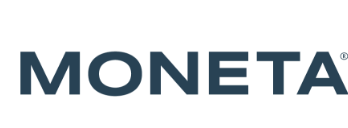A guide for Advisors navigating change
Have You Really Checked Your Data Lately
In conversation with an advisor who had recently moved to a new firm, the advisor said, “You know, I thought I knew my clients like the back of my hand. But when it came to repapering their agreements, I found that I was too comfortable relying on memory of conversations that I had let my systems data become stale. It’s really embarrassing asking a client for updated employer information when you remember consulting them on the move three years ago.”
Data integrity: it’s a topic that is often taken for granted but deserves far more attention.
Data integrity is the quality of data that is accurate, complete, consistent, and reliable. It is essential for any business that relies on data to make decisions, provide guidance, and meet client expectations. Data integrity is especially important when transitioning clients from one system or platform to another, as it ensures that the data is transferred correctly and securely, without compromising its value or meaning.
Here we will discuss why data integrity is important in transitioning your business and clients, what the common challenges and risks involved are, and how to maintain data integrity throughout the transition process. We will also provide best practices for team members who are responsible for ensuring data integrity during any transition process.
Why Data Integrity Matters in Transitioning Your Business
As you look at transitioning your business, migrating client data from one system or platform to another is a complex and delicate process that involves moving large amounts of information, often in different formats, structures, and standards. The data may include sensitive items, such as personally identifiable information (PII), financial records, or legal agreements, that need to be protected and handled with care. The data may also be subject to various regulations, compliance requirements, and contractual obligations, that need to be followed and respected.
Data integrity is crucial in transitioning clients, as it affects the quality and outcome of the transition, as well as the satisfaction and trust of the clients. Some of the key values of data integrity in transitioning clients are:
- Data that is accurate and consistent, which means that the data reflects the reality and the expectations of the clients, and that there are no errors, discrepancies, or gaps in information.
- Complete and reliable data means that the data contains all the necessary and relevant information, and that the data can be used and verified by the clients and other authorized parties.
- Secure and compliant data, which means that the data is protected from unauthorized access, modification, or loss, and that the data meets the legal and ethical standards and obligations of the clients and the business.
Data integrity in transitioning clients can also provide competitive advantages, such as:
- Enhancing the reputation and credibility of your business, as it demonstrates professionalism, competence, and quality of service.
- Increasing the loyalty and retention of the clients, as it shows respect, care, and value for their data and their needs.
- Improving the efficiency and effectiveness of the transition, as it reduces the costs, risks, and delays associated with data errors, inconsistencies, or breaches.
Common Challenges and Risks of Data Integrity in Transition
Despite the importance of data integrity in transitioning your business, there are many challenges and risks that can compromise or threaten this information. Some of the common challenges and risks are:
- Data quality issues, such as data errors, duplicates, missing values, or outdated values, can result from human errors, system errors, or data manipulation.
- Data compatibility issues, such as data format, structure, or standard differences that can result from using different systems, platforms, or tools, or from changing data requirements or specifications.
- Data security issues, such as data breaches, leaks, or losses, that can result from cyberattacks, physical damage, or human negligence.
- Data compliance issues, such as data violations, fines, or lawsuits, can result from failing to adhere to the data regulations, policies, or contracts of the clients or the business.
These challenges and risks can have serious consequences for the business, transition process, and client relationships, such as:
- Data corruption, degradation, or loss, which can affect the validity, usability, and value of the data.
- Data inconsistency, discrepancy, or conflict, which can affect the accuracy, completeness, and reliability of the data.
- Data exposure, theft, or misuse, which can affect the confidentiality, privacy, and security of the data.
- Data non-compliance, dispute, or litigation, which can affect the legality, ethics, and trust of the data.
How to Maintain Data Integrity During Transition
To maintain data integrity in transition, advisors and their teams need to follow a systematic and rigorous approach that covers the entire transition process, from evaluation to planning to execution. The approach should include the following steps:
- Data assessment: This step involves analyzing the current state and quality of the data, identifying the data sources, types, and formats, and defining the data scope, objectives, and expectations of the transition.
- Data preparation: This step involves cleaning, validating, and standardizing the data, resolving any data quality or compatibility issues, and ensuring that the data is ready and suitable for the transition.
- Data protection: This step involves securing, encrypting, and backing up the data, implementing data access and authorization controls, and ensuring that the data is safe and compliant throughout the transition.
- Data transfer: This step involves selecting, testing, and deploying the data transfer methods, tools, and protocols, and ensuring that the data is transferred correctly and efficiently from the source system or platform to the destination system or platform.
- Data verification: This step involves checking, comparing, and reconciling the data, ensuring that the data is accurate, complete, consistent, and reliable after the transition, and resolving any data errors, discrepancies, or gaps.
- Data evaluation: This step involves measuring, reporting, and reviewing the transitioned data, ensuring that the data meets the quality and outcome standards and expectations of the transition, and providing feedback and recommendations for improvement.
Best Practices and Tips for Data Integrity in Transition
In addition to following the steps above, advisors and their teams can also adopt some best practices and tips to enhance data integrity in transition, such as:
- Establish clear and consistent data governance and management policies and procedures and ensure that they are aligned with the data regulations, policies, and contracts of the clients and the business.
- Involve and communicate with the clients and other stakeholders throughout the transition process, and ensure that they are informed, engaged, and satisfied with the data transition outcome.
- Use reliable and reputable data transfer methods, tools, and protocols, and ensure that they are compatible, secure, and efficient for the transition.
- Document and track the transition process and ensure that there is a clear and complete record of the data sources, types, formats, quality, protection, transfer, verification, and evaluation.
- Conduct regular and thorough data audits and quality checks and ensure that there are mechanisms and metrics to monitor, measure, and improve data integrity.
- Train and educate your team on data integrity standards and expectations, and ensure that they have the skills, knowledge, and resources to maintain data integrity in the transition process.
Any Transition is Only as Good as its Data
Data integrity is a vital aspect of transitioning clients, as it affects the quality and outcome of the transition, as well as the satisfaction and trust of the clients. While it seems simple enough, data integrity is vital to the success of any transition experience, whether it be internal or external, or to a new or known vendor. Data integrity can also provide competitive advantages for the business, such as enhancing advisor reputation, increasing loyalty from clients, and improving the efficiency of operations. However, data integrity also faces many challenges and risks, such as data quality, compatibility, security, and compliance issues, that can compromise or threaten data integrity during the transition process. Therefore, advisors and their teams need to follow a systematic and rigorous approach to maintain data integrity in transitioning their business and clients and adopt best practices to streamline the experience.
Remember, whether you are looking to move your business to a new platform, a new partner, or for succession reasons, data integrity plays a crucial role in maintaining trust in your client relationships. For more information, let’s talk.
© 2025 Advisory services offered by Moneta Group Investment Advisors, LLC, (“MGIA”) an investment adviser registered with the Securities and Exchange Commission (“SEC”). MGIA is a wholly owned subsidiary of Moneta Group, LLC. Registration as an investment adviser does not imply a certain level of skill or training. The information contained herein is for informational purposes only, is not intended to be comprehensive or exclusive, and is based on materials deemed reliable, but the accuracy of which has not been verified.
Trademarks and copyrights of materials referenced herein are the property of their respective owners. Index returns reflect total return, assuming reinvestment of dividends and interest. The returns do not reflect the effect of taxes and/or fees that an investor would incur. Examples contained herein are for illustrative purposes only based on generic assumptions. Given the dynamic nature of the subject matter and the environment in which this communication was written, the information contained herein is subject to change. This is not an offer to sell or buy securities, nor does it represent any specific recommendation. You should consult with an appropriately credentialed professional before making any financial, investment, tax or legal decision. An index is an unmanaged portfolio of specified securities and does not reflect any initial or ongoing expenses nor can it be invested in directly. Past performance is not indicative of future returns. All investments are subject to a risk of loss. Diversification and strategic asset allocation do not assure profit or protect against loss in declining markets. These materials do not take into consideration your personal circumstances, financial or otherwise.







